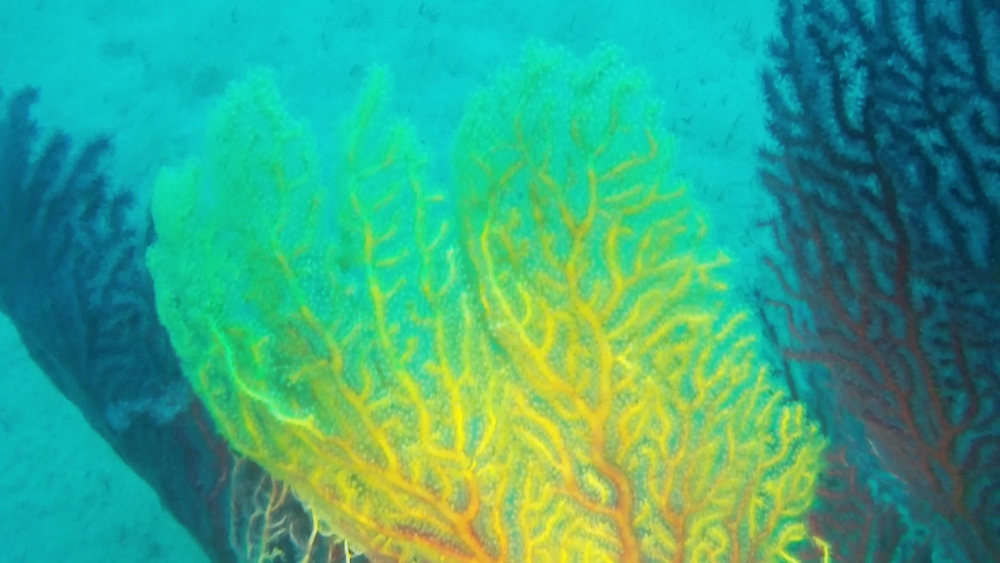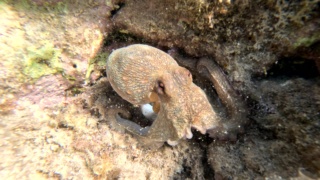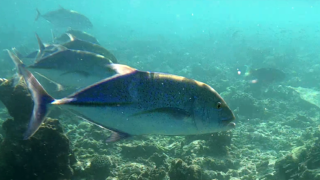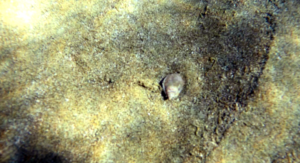It is probably the glass Ctenophore or Bolinopsis vitrea and its host: a transparent Shrimp perhaps from the Phronima sedentaria or in any case a crustacean belonging to the Phronimidae family. Bolinopsis vitrea Ctenoforo di vetro Gambero trasparente intotheblue.it
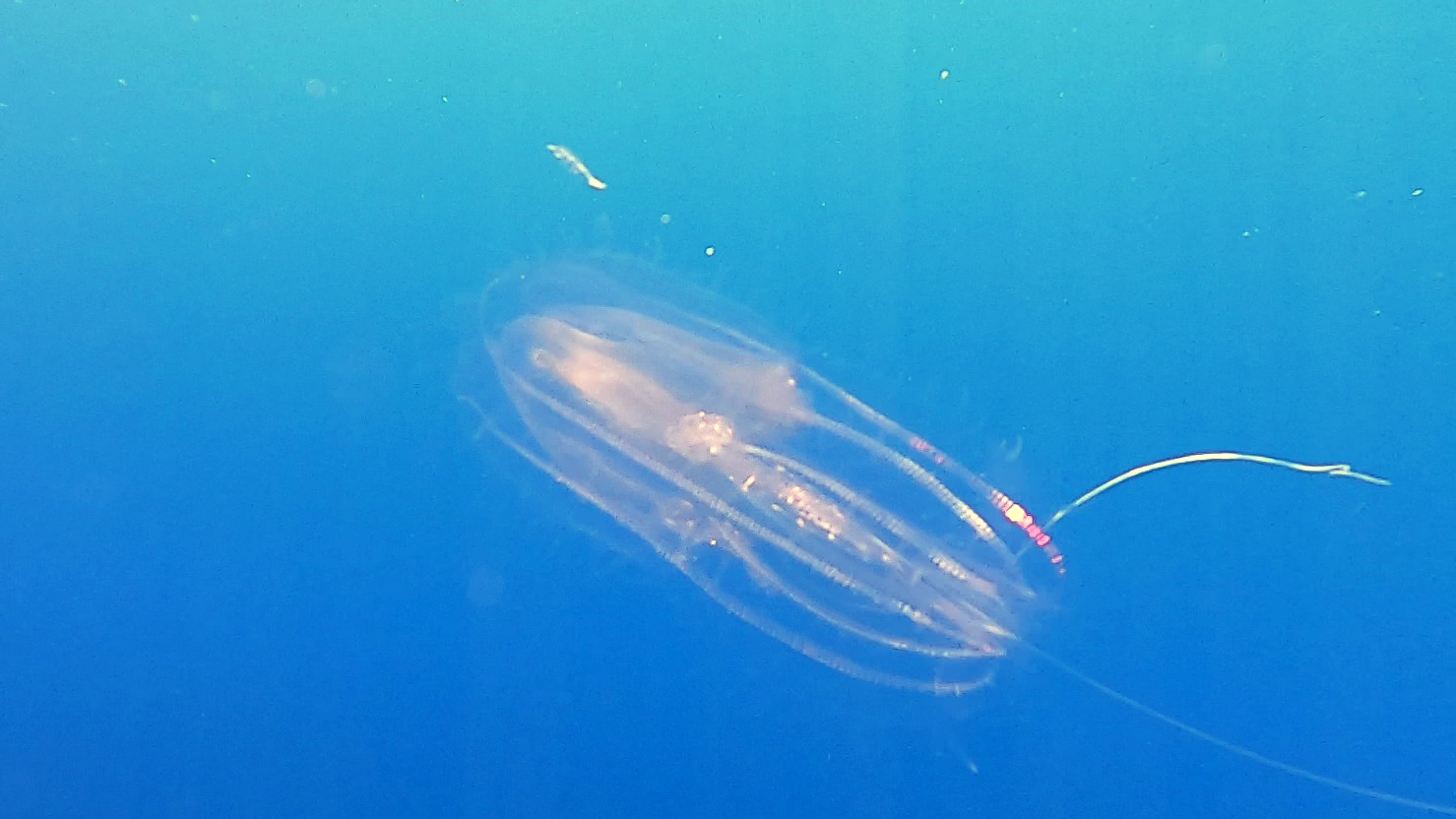
Bolinopsis vitrea – Ctenoforo di vetro e Gambero trasparente – Glass Ctenophore and Transparent Shrimp – intotheblue.it
If we are quite sure about the identification of the ctenophore it is the glass Ctenophore, Bolinopsis vitrea, however it is difficult to identify its host. From what little we see in the video it seems to be a transparent shrimp that lives in symbiosis with the ctenophore, but identifying it is rather difficult for which reports and corrections are welcome.
The video was made these days, in the open sea in the stretch of sea between Livorno and the Gorgona Island and the two were found practically on the surface almost under the surface of the water.
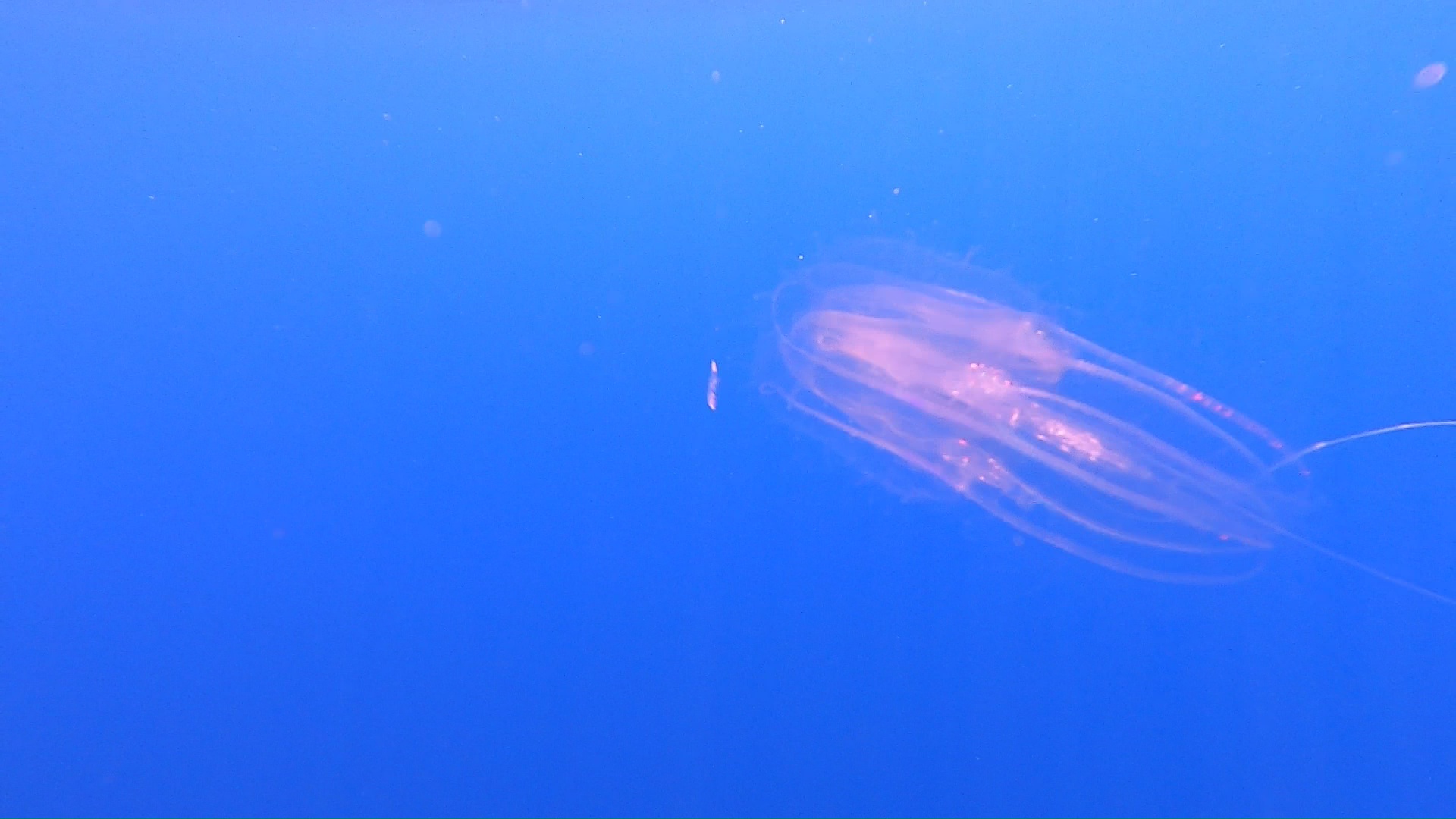
Bolinopsis vitrea – Ctenoforo di vetro e Gambero trasparente – Glass Ctenophore and Transparent Shrimp – intotheblue.it
The glass ctenophore belongs precisely to the philum of the Ctenophores which groups transparent and gelatinous organisms, typically pelagic, whose body is crossed by ribs along which we notice a series of vibrating eyelashes. The lashes are arranged in a comb and hence the name which is equivalent to “bearers of combs”. In tentacles or small combs, the cells are not stinging but adhesive, and it is precisely these adhesive cells called “colloblasts” that capture the zooplankton that these organisms feed on.
The small combs mentioned above are also able to produce particular iridescences.
Their body, like jellyfish, is made almost entirely of water. Like coelenterates, the digestive organs are contained in a large internal cavity and the mouth is located at the end of the body. The individuals are all hermaphrodites with simultaneous egg and sperm production.
https://www.biologiamarina.org/
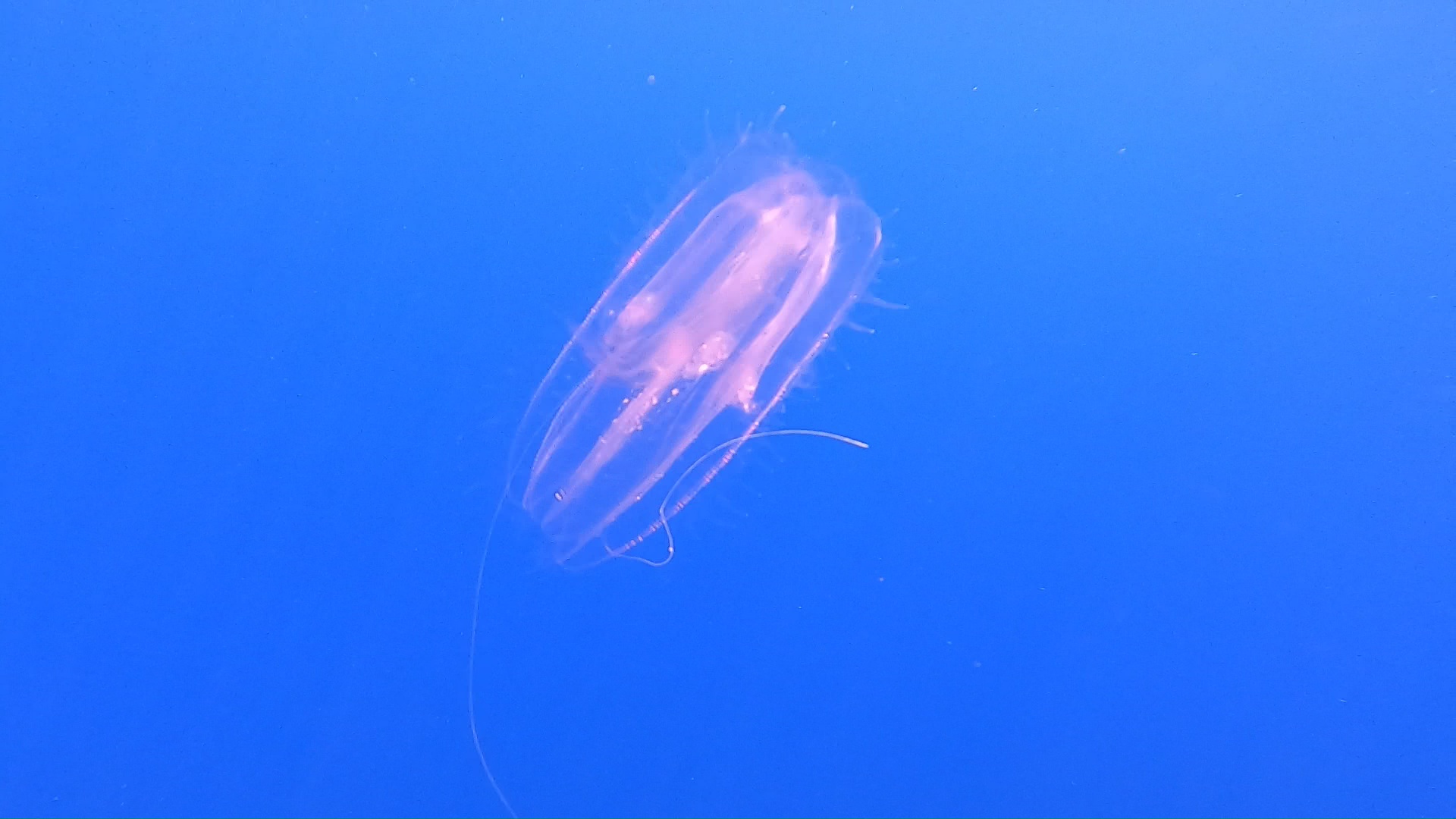
Bolinopsis vitrea – Ctenoforo di vetro e Gambero trasparente – Glass Ctenophore and Transparent Shrimp – intotheblue.it
Ctenophora includes a phylum of invertebrate animals that live in marine waters around the world. They are known for the groups of eyelashes they use to swim and are the largest animals to swim with the help of the eyelashes. Depending on the species, adult ctenophores range from a few millimeters to 1.5 m (4 feet 11 inches). Only 100 to 150 species have been validated, and perhaps 25 others have not been fully described and named.
Examples of textbooks are cidiotides with egg-shaped bodies and a pair of retractable tentacles garnished with tentilla (“small tentacles”) that are covered in colloblasts, sticky cells that catch prey. Their bodies are made up of a mass of gelatin, with a layer of two cells thick on the outside and another that lines the internal cavity. Phylum has a wide range of body shapes, including egg-shaped cidippids with retractable tentacles that catch prey, generally flat platyctenides without a comb and wide-mouthed beroids, which prey on other ctenophores.
https://en.wikipedia.org/wiki/Ctenophora
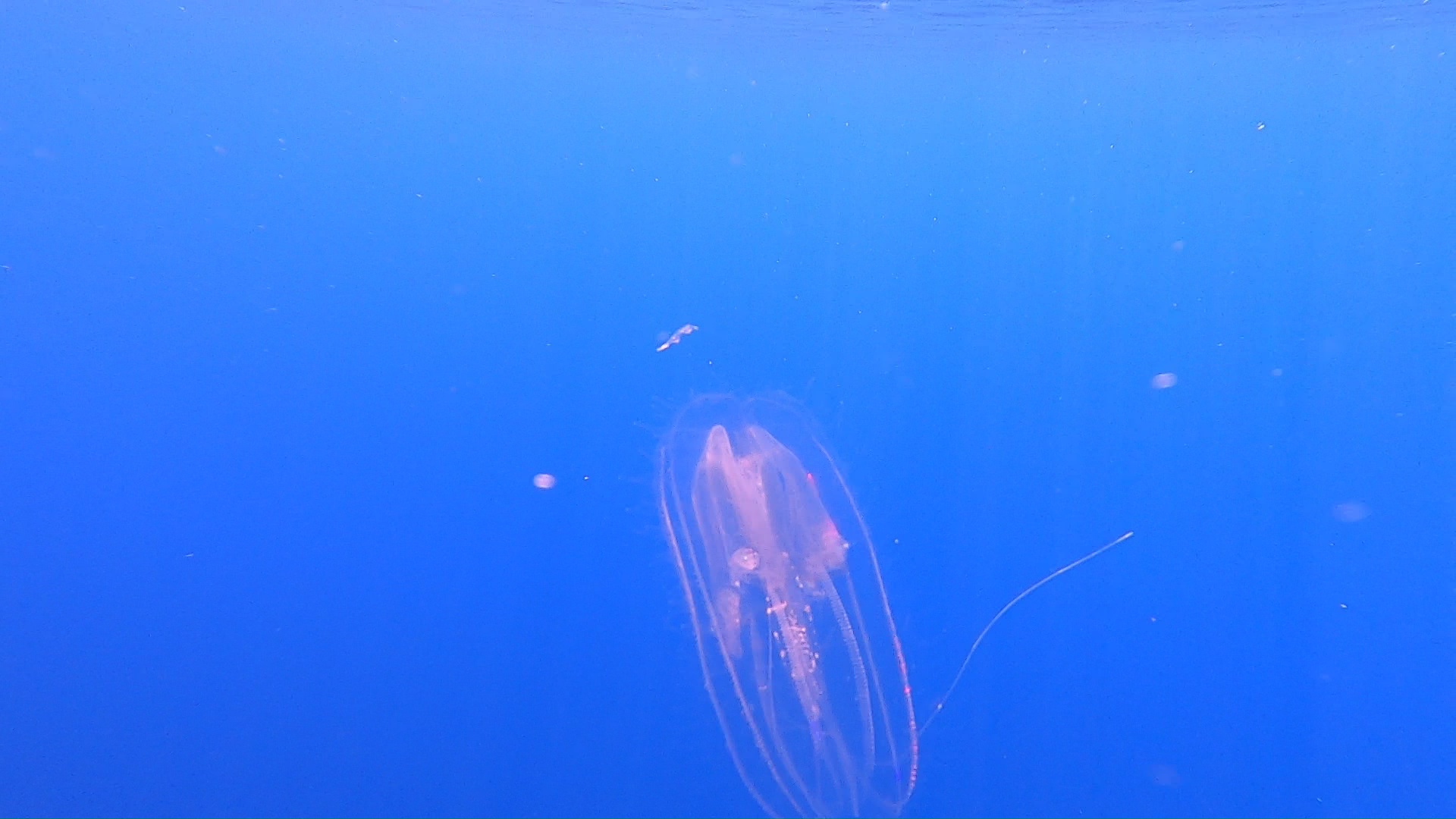
Bolinopsis vitrea – Ctenoforo di vetro e Gambero trasparente – Glass Ctenophore and Transparent Shrimp – intotheblue.it
Phronima sedentaria is a species of amphipod crustaceans found in the oceans at a maximum depth of 1 km (0.6 mi).
Description
Females measure up to 42 mm (1.7 inches) in length, while males are only 15 mm (0.6 inches) long.
Distribution
P. sedentaria is found in the temperate, subtropical and tropical waters of all the world’s oceans, including the Mediterranean Sea. It is usually found in the pelagic habitats of medium waters, but can be found by migrating to the surface.
Ecology
The females of P. sedentaria live in the barrel bodies of jumps and pyrosomes and use their strong pleopods to push their houses through the water. They can quickly flip into their barrels and then change direction. The species is carnivorous on zooplankton, krill and wormworms.
https://en.wikipedia.org/wiki/Phronima_sedentaria
 English
English Italiano
Italiano
